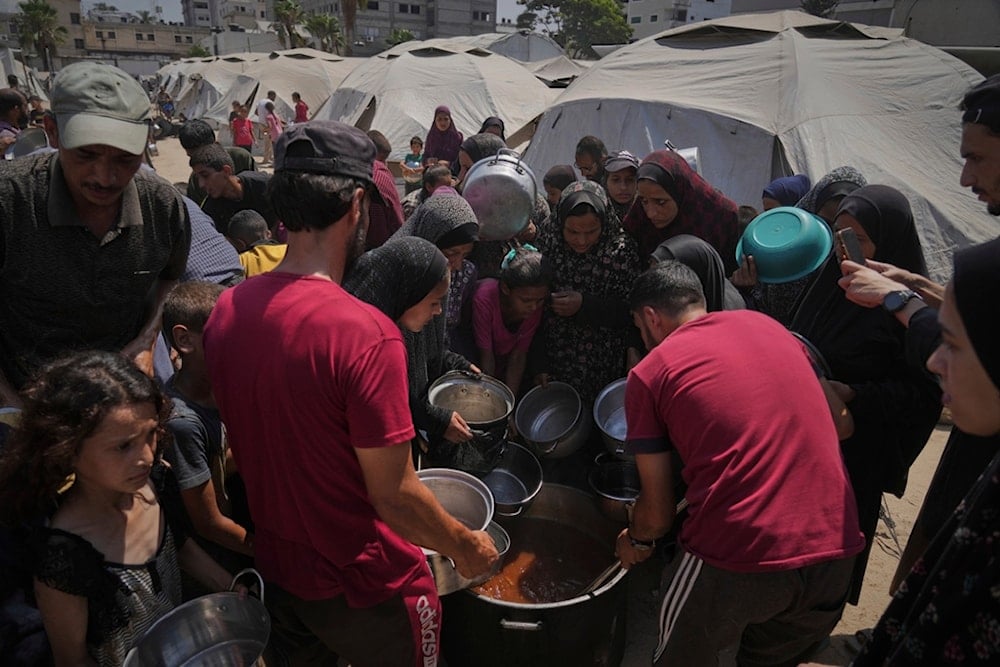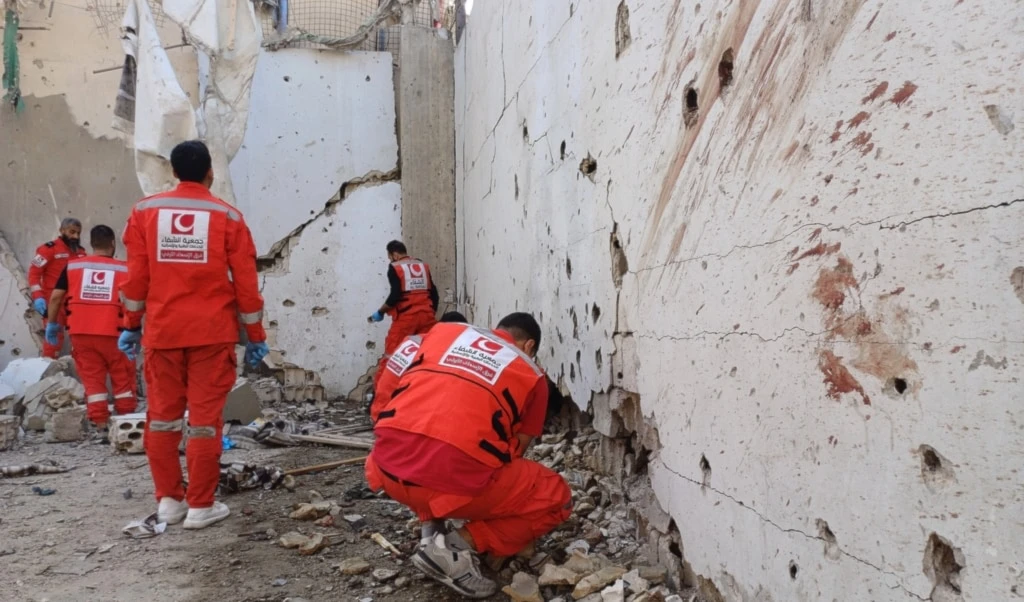US envoy heads to Gaza to push for ceasefire as talks falter
US Special Envoy Steve Witkoff travels to the Gaza region in hopes of advancing the indirect ceasefire talks between Hamas and the Israeli occupation.
-

Displaced Palestinians receive donated food at a community kitchen in Gaza City, northern Gaza Strip, Tuesday, July 22, 2025 (AP)
The United States is dispatching Special Envoy Steve Witkoff to the "Gaza region" as part of renewed efforts to broker a ceasefire between Hamas and the Israeli occupation, State Department spokesperson Tammy Bruce announced on Tuesday.
Speaking to reporters, Bruce confirmed that Witkoff is “going to the region” but stopped short of specifying the exact location of his visit. “Keep in mind that the US has many partners in the area,” she said, suggesting that the envoy’s movements may involve multiple stops in regional capitals.
“I do not have that [specific location], but it is a dynamic. We are looking to finalize this arrangement,” Bruce added.
Tens of thousands killed, deal still not reached
The visit comes amid diplomatic efforts by Washington to allegedly bring an end to the war on Gaza, which has killed tens of thousands of Palestinians and displaced millions more. Bruce said the United States is hopeful the envoy's visit will help lead to a truce.
“I don't have the specifics of exactly where he'll be, but clearly it's in a position where he's going to be able to continue with the negotiations that will lead us to this, hopefully, ceasefire,” Bruce said during the press briefing.
Witkoff’s trip marks a continuation of US shuttle diplomacy in the region, amid faltering indirect talks and increasing pressure from humanitarian organizations to halt the ongoing Israeli bombardment of Gaza.
Hamas intensifying efforts to end Gaza war
The Palestinian Resistance group Hamas announced Monday that it was intensifying efforts around the clock to alleviate the worsening humanitarian catastrophe in the Gaza Strip.
In an official statement, the movement emphasized that ending the siege, famine, and ongoing war is its top priority in ongoing communications with mediators, governments, and all concerned parties.
Hamas stressed that these efforts come amid a continued campaign of genocide waged by the Israeli occupation against the Palestinian people in Gaza.
The movement noted that it is fully aware of the pressure tactics used by the occupation, particularly the deliberate targeting of civilians and mass killings in Gaza, as part of a broader attempt to extract political concessions it failed to obtain through negotiations.
Updated draft ceasefire deal
The report identifies two major changes in the new draft: adjustments to the scope of the Israeli military withdrawal and slight modifications in the prisoner exchange formula, often described as a key talking point.
The proposal outlines a 60-day ceasefire period, during which Hamas would release 10 living Israeli captives and 18 bodies. In turn, "Israel" would free several Palestinian detainees and allow for a significant surge in humanitarian aid into Gaza.
While the exchange ratios remain largely intact, the new version introduces minor alterations. Earlier drafts had specified the release of 125 Palestinians serving life sentences and 1,111 others detained after October 7. An unnamed Israeli official cited by Channel 12 said that while "the changes are not expected to derail the talks," the key point of contention now lies in negotiating the exact list of names.
One of the most significant developments involves a notable shift in the Israeli occupation's military posture in southern Gaza. Previously, "Israel" demanded to maintain control over a 5-kilometer-wide zone north of the Philadelphi Corridor, adjacent to the Egyptian border.

 4 Min Read
4 Min Read










